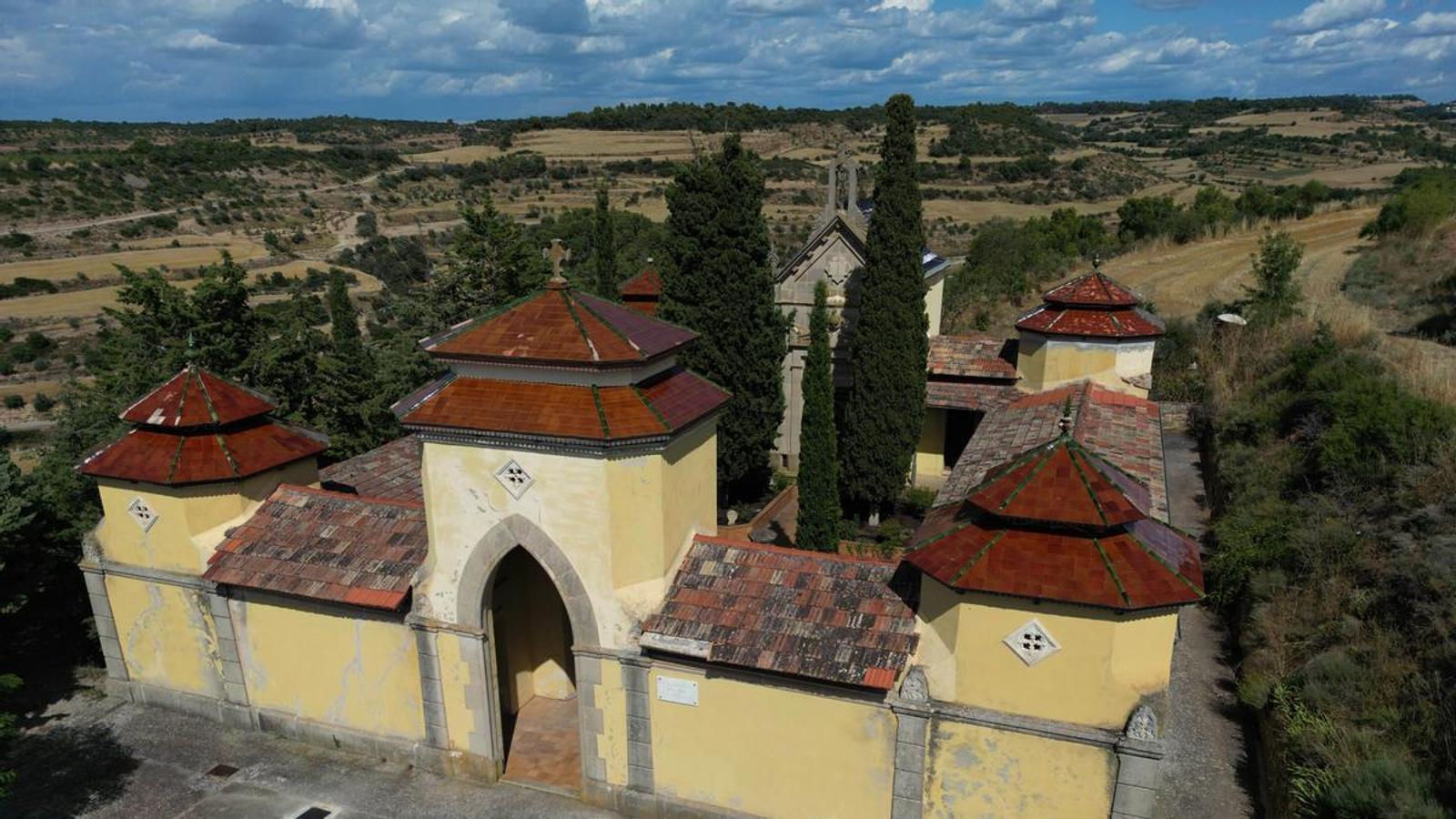The exceptional story of the second best cemetery in the State
The legacy of an Indian from Montornés de Segarra receives recognition in the IX Cemetery Competition

Montornés de la SegarraThe cemetery of a town of only 88 inhabitants, in the interior of the Segarra, has been awarded as the second best cemetery in Spain in the IX Cemetery Competition organized by the magazineGoodbye Cultural, behind Las Ruedas de Pintia, in Valladolid. Montornès de Segarra is a small village located off the main roads and, until the beginning of the 20th century, accessible only by rural roads. However, it hides a unique cemetery, not only for its beauty, but also for its exceptional architecture and history.
Josep Balcells i Cortada (1854-1931) is the protagonist of this cemetery and of Montornès's recent history. A son of the village, he moved to Havana, where he made his fortune with a company dedicated to the export and import of wine and textiles. With this wealth, he wanted to give back to his hometown part of what he had earned, so he funded the construction of schools and promoted a unique cemetery, where each family in the village received a row of niches.
Construction of the cemetery began in 1896 and stands on a small hill in the eastern part of the municipality, far from the town center. This unique funerary enclosure stands at this point of the town's eve. Square in plan and with a tower at each corner, the building frames the space with a symmetry that makes it solemn. Color plays an essential role: the intense yellow of the walls and the ceramic red of the roof contrast with the surroundings and make it visible from afar.
The entrance, located between two towers, is distinguished by a neo-Gothic portal with a pointed arch. The side towers also have roofs reminiscent of oriental pagodas, with overlapping gabled tiles. Once inside, the visitor finds a square garden surrounded by double rows of porticoed niches. At the end of the central path, a small chapel marks the focal point of the space. The façade combines the solid air of Neoclassicism with Neo-Gothic details, most visible in the tympanum. The interior, with a ribbed vault and ornamental nails with plant motifs, culminates in a recently restored polychrome wooden altarpiece. Below the chapel, the Balcells family pantheon remains empty: Josep Balcells is not buried there.
"We know that he left Cuba after the loss of the colonies and that he made his fortune as a merchant," explains Dionís Oña, mayor of Montornès, who is familiar with the life of the Indian benefactor. He was a member of the Congress of Deputies for Igualada in 1898 and for Cervera in 1903, with the Liberal Party. He also served intermittently as a senator for Tarragona from 1910 to 1917. As Oña recalls, Balcells "eventually became a senator for Tarragona and was linked to the Liberal Party, but he wanted to be senator for his hometown, and he didn't succeed." "That broke the link with the town. The truth is, he left it written down that he didn't want to be buried here," says the mayor.
Josep Balcells i Cortada died in Barcelona on April 20, 1931, and was buried in the Montjuïc Cemetery in Barcelona. Despite his estrangement, Balcells left a fund and specific regulations to ensure the maintenance of the Montornès cemetery. "It has been spent over the years, but very prudently," Oña remarks. "The restoration of the chapel altarpiece was the last major project." Now that this fund has been exhausted, the council has decided to create a new tax for families with niches that will allow for continued maintenance work.
In 2025, the town once again entered the state cemetery competition. "We've done so in other years, but we've never been a finalist," says the mayor, adding: "Now, after some improvements and with the impetus of a new interior restoration project, we've won second prize." Among the imminent projects is the installation of columbariums inside one of the towers, a minor project that doesn't alter the structure of a protected building. Currently, the cemetery offers two niches per house, a fact that is part of the town's collective memory. "It's something that has always been said, but we haven't found any document to prove it," Oña acknowledges. However, he assures that they will respect this tradition.
This familial connection with the space remains alive among the residents. "Mr. Balcells's birthplace is still there, in the village. It's called Cal Balcells, but it doesn't belong to his family; they sold it a long time ago, perhaps out of necessity or because they didn't want to have anything else to do with Montornès," explains Ramona Berengué, from Cal Chirill, a lifelong resident.
Berengué also remembers how access to the cemetery has always been managed. "It's not open like in other places. There are a few houses in the village that have the key, and if anyone wants to go, they ask for it. It's always worked that way," she says. She also recalls one of the last major celebrations at the site: "When he turned 100, in 1996, a mass was held in the chapel. It was very beautiful, because nothing had been done for many years."
The cemetery is not open to the public, but the Town Hall is working on a system of scheduled visits with a time and contact telephone number. "We want people to know it, for it to become part of the area's heritage circuit. With Cervera nearby and other rural elements, we can build a very powerful discovery route," concludes the mayor.
Silently, between the yellow walls and the cypress irrigation ditch, the Montornès cemetery continues to tell a story of returns, ruptures, and legacy. A living heritage that, from the discretion of the landscape, is beginning to be recognized.
